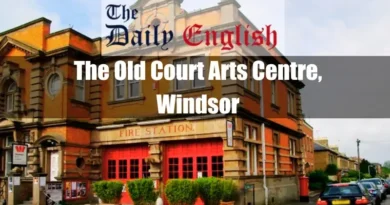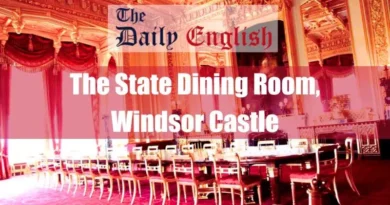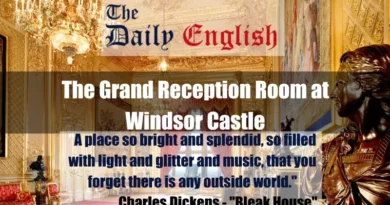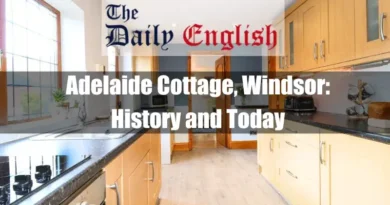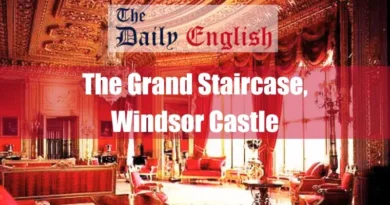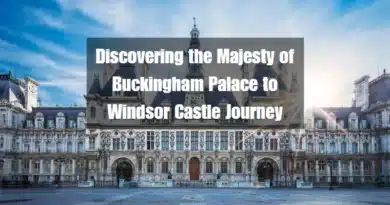I. Introduction to Kingston upon Thames
Southwest of London, England’s Royal Borough of Kingston upon Thames contains the town of Kingston upon Thames (considerable overlap until 1965; often referred to as Kingston). Its location is (16 km) 10 miles southwest of Charing Cross along the Thames River. It is noteworthy for its history as the Saxon kings’ coronation town and the Royal Borough’s administrational hub today.
We will answer generally asked questions in this article as follows:
- What is Kingston’s most historic landmark?
- What is the significance of London Kingston Upon in terms of its history?
- How has Old London Road changed over time?
- How does the Rose Theatre Kingston contribute to the local culture and arts?
- What kind of activities are organized by the Kingston Choral Society?
- What kind of educational opportunities are provided by Kingston Grammar School?
- Why is Kingston located in County Surrey instead of another county?
- What do we know about the seven Saxon Kings who ruled during this period?
- In what ways was it a medieval market town compared to other towns back then?
- How does it compare with other London boroughs in terms of development and infrastructure today?
II. History of Kingston of Thames
Kingston’s historic county, Surrey, was included in the newly constituted Municipal Council area of Kingston-upon-Thames in 1835. Since Kingston became a region of Greater London in 1965, Surrey County Council has been administered extraterritorially there. The Surrey County Council location was there from 1893 to 2021.
Most of the town centre now falls within the KT1 postcode; however, a few locations north of Kingston rail station are in the KT2 postcode region. The town, which includes the four wards of Grove, Canbury, Tudor, and Norbiton, had a population of 43,013 according to the 2011 U.K. Census, while the borough had a population of 175,470. With 18 million annual visits, Kingston is the largest retail centre in the UK and is designated as a metropolitan in the London Plan. Additionally, Kingston University calls it home.

A. Local Government of Kingston
Kingston upon Thames organized an ancient county in the Kingston hundred of Surrey. The towns of Hook, New Malden, Kew, Richmond, Petersham, Thames Ditton, Surbiton, and East Molesey were all included in Kingston upon Thames.
King John awarded the town of Kingston a declaration in 1200, although the earliest copy, from 1208, is kept in the town’s archives. Later monarchs awarded other charters, notably Edward IV’s, which granted the city the borough title in 1481.
Although the parish and borough finally became identical in 1894, the borough initially had a significantly smaller size than the historic parish. The Metropolitan Corporations Act of 1835 changed the borough, renaming it the Metropolitan Suburb of Kingston-upon-Thames. It was traditionally referred to as a Royal borough, and George V validated the title’s legitimacy in 1927. Despite not being under its control, Kingston upon Thames served as Surrey County Council’s headquarters from when it relocated from Newington in 1893 to 2021.
UK Immigration & UK Visa – Frequently Asked Questions & Best Answers
B. Ancient History of Kingston upon Thames
Chingestune, Cyninges tun, Kingston, Kyngeston supra Kingestowne, and Tamisiam upon Thames were the names given to Kingston between 838 and 1589. The ancient English words tun and cyning that make up the name translate to “the king’s castle or estate.” It was the first royal town and belonged to the monarch in Saxony.
Kingston is first mentioned in a document dating from AD 838, when King Ceolnoth, Archbishop of Canterbury, and Egbert of Wessex met there. Before King Athelstan unified both to become the realm of England in the early tenth century, Kingston was located on the border of the ancient kingdoms of Wessex and Mercia. According to the Anglo-Saxon Chronicle, Ethelred and Thelstan the Unready, two kings of the 10th century, are said to have been crowned at Kingston. Other kings, notably Edward the Eadwig, Elder, Edred, Edgar the Peaceful, Edmund I, and Edward the Martyr, should have been crowned there. However, the evidence (including Florence of Ralph de Diceto’s and Worcester’s writings) is less convincing. Later, it was speculated that the coronations occurred in the St. Mary chapel, which disintegrated in 1730. According to a legend from the eighteenth century, a big stone found in the remains is said to have been used in coronations. It was first used as a mounting block but was transferred to a more respectable spot in the bazaar in 1850 before being eventually moved to its present site in the Guildhall grounds.
Shrovetide Football has been played yearly in Kingston upon Thames and nearby communities like Richmond and Twickenham since the Middle Ages. At midday, the windows of the homes and businesses were boarded up, and the locals would kick a few balls about the town before going to the bars. The final game took place in 1866, after which the tradition was banned since urbanization caused too much harm.
1. Kingston Shrovetide Football 1846
The municipal borough was eliminated when Greater London’s local administration was reorganized in 1965. The London County of Kingston upon Thames was created by combining its previous territory with the Municipal Boroughs of Malden, Surbiton, and Coombe. Queen Elizabeth II approved a new royal assent at the proposal of the Kingston upon Thames London Municipality Council, allowing it to continue referring to the new county (Royal Borough of Kingston upon Thames.)

C. Economic Development in Kingston upon Thames
Kingston developed as a market town from the Saxon era, with commodities being moved on the Thames and across land through the crossing point. The imperial constitution of 1208 included the right to host markets among the privileges it provided, and the market was legally created in 1242. A horse fair was performed at a location on the river’s downstream bank just north of the bridge, and by the seventeenth century, a market had spread from there to the area around the church and further south along the Hogsmill River’s course. The products were Rye, oats, malt, wheat, apples, leather flowers, wool, and cheese. There were additional trades in fish, cattle, and meat. In 1662, a Midweek market was added to the weekly Saturday market. Regular fairs were organized in addition to marketplaces. The local enterprises included brick-making, pottery, leather-working, milling, fishing, brewing, tanning, and boat-building.
Tommy Sopwith decided to extend the manufacture of early aircraft from Sopwith Aviation’s Brooklands roots to Kingston because of the availability of woodworking and fabric craft skills related to boat making. Harry Hawker, Sydney Camm, and Tommy Sopwith, three well-known aviation figures, were primarily responsible for Kingston’s accomplishments in the field of aviation. Kingston was a significant military aircraft production hub for most of the 20th century, focusing on fighter aircraft. This was initially with H G Hawker Engineering, Sopwith Aviation, Hawker Siddeley, Hawker Aircraft, and British Aerospace. The town is also the home of the legendary Hawker Fury, Sopwith Camel, Hunter, Hurricane, and Harrier jump jets, all of which have exhibits on display at the neighbouring Brooklands Museum. Aerospace’s Lower Ham Road facility was officially shut down in 1992; half of the property was later converted into homes, while the riverfront portion now contains a community centre and sports complex.
D. Urban Development in Kingston upon Thames
Kingston was established at the earliest Thames crossing location upstream of London Bridge, and a bridge still stands there today. This “great bridge” first achieved prominence in the 13th century. After the Romans left, Kingston was either a royal palace or a royal demesne. Egbert of Wessex, the King of Wessex, is mentioned in a record of a council that was convened there in 838. William the Conqueror was the owner, according to the Domesday Book. Regarding assets, it had a church, five mills, four fisheries of ten shillings each, 40 acres of grassland, 27 ploughs, and six pigs’ worth of woods. It earned 32 pounds ($31.10).
The sexton was excavating a grave when the chapel housing the royal effigies collapsed in 1730, burying him with his daughter and another person. The daughter, who had survived the incident, succeeded her father as sexton. Before a petition by the locals asking to be released from the obligation, Kingston sent representatives to early Parliaments. The Lovekyn Chapel, a college chapel for St. Mary Magdalene, is still in use. Edward Lovekyn, a previous mayor of London, established it in 1309. This one is the only private chantry chapel through the Reformation.
Once the railway arrived in the 1830s, the south of the town saw a lot of construction growth. However, the Surbiton Park estate, constructed in the 1850s on the grounds of Surbiton Place, remained a part of Kingston throughout the Municipal Borough of Kingston-upon-Thames. A large portion of this became the new town of Surbiton.
After The Barracks was finished in 1875, the borough had a constant military presence.
E. Recent Developments in Kingston upon Thames
When the Kingston Relief Road was built in 1989, major commercial lanes in the town centre and the old Market Place were closed to traffic. The Bentall Center shopping centre and John Lewis Kingston department store were two significant commercial projects constructed in Kingston Town Center. The riverfront walk was finished in the early 2000s as part of the Constitution Quay development Kingston Bridge, which also included restaurants, bars, and the Rose Theatre, which opened in 2008 under the direction of Sir Peter Hall.
Please also read the fascinating articles.
- 12 Stunning High-Quality Luxury Hotels In London – Amazing Intuition
- Fascinating Things to Do in London on Christmas – Merry Christmas
- Here’s What Really Matters in the Best Coffee Shops in London – Introducing Truth
- The Top Eight Best-Selling Cars in the UK 2023
III. Governance of Kingston upon Thames
The territory south of the train line (which includes the historic town centre) is part of Surbiton and Kingston, which Ed Davey of the Liberal Democrats manages. The area north of the train line is part of Richmond Park, which Sarah Olney of the Liberal Democrats maintains.

IV. Famous Locations of Kingston upon Thames
With a modest number of business establishments and government structures, Central Kingston is a bustling, mostly pedestrianized area that is primarily a shopping location.
The shopping centre has a mall called “The Bentall Centre,” which houses the department store sizable outposts and Bentalls of popular chain retailers in many British city centres. The John Lewis department store chain has a sizable franchise, and the basement houses the Waitrose grocery shop. Nearby is the tiny Eden Walk retail centre, built in the 1960s. The Rotunda is a 15-screen Odeon multiplex theatre and a few eateries located in a former Bentalls furniture storage building (a local icon).
The old market, which includes fish, jewellery, foreign delicacies, regional foods, and flowers, is still conducted daily at the Market Place.
The city’s civic structures include the modern Crown Court, Guildhall, public library, smaller County Court, and Kingston Museum. The Guildhall hosts the magistrates’ court, and the Kingston Council is beside the partially culverted Hogsmill River mouth. The County Hall Building, where Surrey Borough Council’s main offices are located, is nearby. After Newington served in this capacity from 1791 to 1893, Kingston served as the county town of Surrey from 1893 – 1965 before becoming one of the thirty-two London boroughs of Greater London. Since Kingston is no longer under Surrey’s control, Guildford has formally recovered this historic title, which is currently only used ceremonially.
The River Thames, with its bustling façade of pubs and restaurants, is Kingston’s principal open area. A stroll through Canbury Gardens leads to Teddington Lock farther downstream. A promenade upstream spans the Hogsmill River and nearly reaches Surbiton. Eagle Brewery Wharf is a riverfront public area owned by the council. A tree-lined river bank representing the size of Hampton Court Park is seen over Kingston Bridge.
V. Culture of Kingston Upon Thames
The Rose Theatre is a renowned location for dramatic arts. This theatre has nine hundred seats and debuted in 2008. The audience is seated in a circle around the platform. Most classical choral and musical performances occur on Saturdays at All Saints Church, which also has a Frobenius organ. The Kingston Choral Society, the Kingston Philharmonia, an amateur symphony orchestra, the Kingston Orpheus Choir, and the Kingston and District Chamber Music Society are just a few of the choral organizations in the area. The Council and Kingston Arts Council organize events yearly, such as Think-in-Kingston, Kingston Readers’ Festival, and Festival of the Voice. Kingston University administers the Stanley Picker Gallery, and Kingston Museum’s first floor has a rotating gallery. The Rose Theatre has a regular singing club that welcomes children and families.
Author John Galsworthy was born on Kingston Hill, where Jacqueline Wilson also was raised, attended school, and still resides. Galsworthy is honoured in the university’s newest building, while Wilson is marked in the main hall. Photographer Eadweard Muybridge, born in Kingston and modified the spelling of his first name according to the title of the Saxon king on the enthroning Stone, is also honoured at the institution. He was the first in the field of moving-image photography. The dramatist R. C. Sherriff is also connected to Kingston since he wrote his first play to aid Kingston Rowing Club. John Cleland was a previous author who was born in Kingston.
The city of Kingston has been depicted in literature, film, and television. Three Men in a Boat, a humorous Victorian book, is set there, as is The War of the Worlds. At The Rainbow, Brangwen spends a lengthy, lyrical period in Kingston upon Thames. Mr. Knightly often travels to Kingston in Emma, but the story never follows him.
The history of Kingston also makes extensive use of fine art. Many well-known designers and painters attended the university, including John Bratby, David Nash, Fiona Banner, and Jasper Morrison. Jeremy Moon and John Hoyland also had permanent studios in Kingston.
Singer-songwriter and guitarist Eric Clapton was born and raised in Kingston upon Thames, where he busked at the beginning of his musical career. The rock band Cardiacs was also founded in the town.

Monty Python’s Flying Circus episodes refer to Kingston.
More recently, the sculpture of the overturned telephone boxes at Old London Road was used as the backdrop for a scene from the Bollywood film Mujhse Dosti Karoge, in which Hrithik Roshan plays a significant role. In a scene from the television show The Good Life, Richard Briers boards bus 71 in “The Avenue” and travels to Kingston’s downtown.
Numerous places in the town were utilized for the 1974 Doctor Who adventure “Invasion of the Dinosaurs.” An almost complete episode of the 2008 Primeval season, which aired on ITV1 in January, was shot within the John Lewis and Bentall Centre department shops. In May 2009, Primeval included Kingston again, with many sequences being filmed in and around Market Place.
From 1987 until 2008, the Kingston Green Fair was held yearly on the Spring Bank Holiday at Canbury Gardens, next to the river. The term “Green” in the fair alludes to its mission of fostering sustainable development. For example, electricity was prohibited on the property or selling meat or other items made from deceased animals unless the energy came from the sun, the wind, or a bicycle. The Crack Comedy Club debuted in 2002 in The Grey Horse Pub and is also located in Kingston.
VI. The economy of Kingston upon Thames
Kingston’s central area is home to several public houses converted into restaurants or bars. The Park Tavern, The Wych Elm Canbury Arms, and Willoughby Arms are a few more traditional pubs in the town’s northern portion (Canbury). The Spring Grove, the Druid’s Head, The Albion Tavern, The Cricketers, The Duke of Buckingham, and numerous additional taverns around Fairfield are located farther south. The Druid’s Head is remarkable for being one of the first pubs to serve syllabub in the eighteenth century. Several restaurants serve Italian, Indian, Chinese, Thai, and Pakistani cuisine.
The weekly Surrey Comet, which achieved its 150th year in 2004, is one of the local publications. Kingston, who spent £810 million on sales in 2010, was placed 25th in the UK for retail spending, barely ahead of Southampton and equivalent to Covent Garden. With just four West End options ahead, it now generates the fifth-highest level of retail sales in Greater London, surpassing Croydon. With £865 million in 2005, Kingston ranked 24th overall and third in London. After Croydon, Kingston was placed second best in Greater London in a 2015 Consolidated Analysis Center, Integrated survey of the Hot 100 Retail Locations in the UK. Only Cambridge, Chichester, Bath, and Reading were placed higher than Kingston in Knight Frank’s “High Street Business Ranking” for the UK in 2018.
Only the West End, Shepherd’s Bush, and Stratford outperformed Kingston upon Thames regarding yearly retail turnover for comparable items in Greater London in 2011. Kingston upon Thames had a turnover of £432 million.
VII. Public Art of Kingston upon Thames
Out of Sequence by David Mach, a sculpture made of twelve abandoned red telephone booths turned up to balance on one another in a pattern like dominoes, is one of Kingston’s odd sights. The artwork, which was hired in 1988 as part of the design for the new Relief Road, was dubbed “anti-minimalist” by its author.
VIII. Local Transport for Kingston Upon Thames
A. Bus to Kingston upon Thames
With connections to locations around Surrey and Greater London, including direct routes to Heathrow Airport, Kingston is serviced by two bus terminals, Cromwell Road and Fairfield, and many bus stops.
B. Road to Kingston upon Thames
The Kingston Bypass traverses South and East of Kingston. The bypass carries the A3, which connects the region to Clapham, Wandsworth, and the City of London to the north. The A3 travels from the south to Portsmouth through Petersfield and Guildford.
The A309 travels along a stretch of the bypass to Hampton Court, Thames Ditton, and the A308.
There are several radial routes as follows:
- A238 towards Colliers Wood, Raynes Park, and Tooting
- A2043 towards Cheam and New Malden
- A240 towards Epsom and Banstead
- A307 towards Richmond, Petersfield, and the M4, or towards Esher, Thames Ditton, and Cobham
- A310 through A308 towards Twickenham and Teddington
- A308 towards the Putney, A3, and Wandsworth and towards Sunbury-on-Thames, Hampton Court, and Staines
C. Rail/Train to Kingston upon Thames

The Kingston railway station, established in 1863, is the central transportation hub for Kingston.
South Western trains from London Waterloo stop at the station in tariff zone 6 of London. Direct connections from Kingston to places like Clapham Junction, Wimbledon, and Vauxhall are made possible by trains to Waterloo. Shepperton is reached by eastbound trains through Hampton, Teddington, and Sunbury. On the Kingston loop route, eastbound trains also go into Teddington, Twickenham, Strawberry Hill, and Richmond before continuing to Waterloo. Advertisements for trains to Kingston from Waterloo point toward “Shepperton” and “Strawberry Hill.”
A neighbouring station in Norbiton (fare zone 5) is on the same lines.
On the South West Main Line in London’s fare zone 6, close by Surbiton station, which opened in 1838 under Kingston, is located. South Western trains from Waterloo also go to Surbiton. Surbiton is connected to places in Surrey and Hampshire, such as Hampton Court, Woking, Guildford, and Basingstoke, via southbound trains.
D. Kingston Relief Road
To ease traffic in busy commercial areas and to approach Kingston Bridge, planners suggested an elevated ring road that would circle the town centre in the 1960s. A temporary one-way system was introduced in July 1963 in response to local citizens’ complaints. The Kingston Relief Road was subsequently built in the heart of Kingston in the late 1980s. The road that rings the town centre and is often called the “Kingston one-way system” allows for the pedestrianization of busy retail districts like Clarence Street. Before using Kingston Bridge to travel across the River Thames, the route runs beneath John Lewis Kingston on the western side of the town centre. Two bus stops were built, bike lanes were created, and many pieces of art, including Out of Order by River Celebration and Carole Hodgson, were commissioned to make as part of the project.
IX. Routes for Cycling to Kingston upon Thames

Kingston is connected to locations around London and England via cycling paths.
Important routes to Kingston upon Thames include:
- Cycleway 28 is a two-way, segregated bike lane between Seething Wells and Kingston along Portsmouth Road.
- National Cycle Route 4 connects St. David’s to Greenwich. Near Kingston, NCR4 travels along the River Thames, passing across Kingston Bridge from the southern bank to the northern bank. The route travels via Ham, Barnes, and Richmond Park to Greenwich and Central London. NCR4 travels via Egham, Walton, and Eton to Reading. It is a section of EuroVelo 2, which runs from Moscow to Galway.
- Cycleway 30 is a segregated bike lane along A308 London Road from C29 at Putney Vale to Kingston.
- Cycleway 29 – A bike path between Fishponds Park and Kingston that is mostly two-way and separated from other traffic. Ewell Road and Penrhyn Road are followed throughout most of the journey.
X. Thames River – Kingston upon Thames

Kingston is home to the Kingston Turks Piers and Kingston Town End. Turk Launches runs a river cruise between Richmond St. and Hampton Court Helena, only available during the summer.
XI. Schools at Kingston upon Thames
Education at Kingston Upon Thames Penrhyn Road campus, the main building of Kingston University.
Kingston University and College are located in Kingston, also home to Latchmere School and Tiffin School. King Athelstan School, Fernhill School, and St. Agatha’s Catholic Junior School are some of the town’s elementary schools. The Tiffin School, Kingston Academy, Kingston Grammar School, and Tiffin Girls’ School are some of the secondary schools in the community, and they all serve sizable catchment regions in Surrey and Greater London.
Kingston has become a university town due to the expansion and advancement of Kingston Polytechnic, which became Kingston University in 1992.
List of Schools in Kingston upon Thames
- Alexandra School
- Burlington Junior School
- Christ Church CE Primary School
- Coombe Hill Infant School
- Corpus Christi RC School
- Fern Hill Primary School
- Green Lane Primary School
- King’s Oak Primary School
- Knollmead Primary School
- Lime Tree Primary School
- Malden Manor Primary School
- Maple Infants’ School
- Robin Hood Primary School
- St Mark’s & St Andrew’s CE Junior School
- St Joseph’s RC Primary School
- St Mary’s CE Primary School
- St Paul’s CE Primary School
- Tolworth Infant School
- Chessington School
- Coombe Girls’ School
- Holy Cross School for Girls
- Richard Challoner School
- Tolworth Girls’ School
- Tennis Avenue School
- Tiffin School for Boys
- Dysart School
- St Philip’s School
- Hillcroft College
- Holy Cross Preparatory School
- Park Hill School
- Shrewsbury House School
- Westbury House School
- Canbury School
- Burlington Infant School
- Castle Hill Primary School
- Christ Church Primary School
- Coombe Hill Junior School
- Ellingham Primary School
- Grand Avenue Primary School
- King Athelstan Primary School
- Kingston Community School
- Latchmere School
- Lovelace Primary School
- Malden Parochial CE School
- Our Lady Immaculate School
- St Agatha’s RC Primary School
- St John’s CE Primary School
- St Luke’s CE Primary School
- St Matthew’s CE Primary School
- St Paul’s CE Primary School
- Tolworth Junior School
- Coombe Boys’ School
- Hollyfield School
- The Kingston Academy
- Southborough High School for Boys
- Marymount International School London
- Tiffin Girls’ School
- Bedelsford School
- Malden Oaks School
- Kingston College
- Surbiton High School
- Educare Small School
- Liberty Woodland School
- Rokeby Preparatory School for boys
- Study School
- Kingston Grammar School
XII. Sports in Kingston upon Thames
Four association football teams call Kingston their home, including Chelsea F.C. Women, which plays at the Corinthian-Casuals, Kingsmeadow Stadium, Kingstonian, Tolworth, and Hook United, which also plays in Chessington. In contrast to Kingstonian, Corinthian-Casuals, and Chessington & Hook United, who are non-league teams, Chelsea F.C. Women compete in the FA Women’s Super League.
Kingsmeadow Athletics Stadium is nearby and is home to Kingston Athletic Club and Polytechnic Harriers. This stadium has a floodlit 400-meter track, a gym, and 5-a-side football facilities. Kingston Rowing Club, established in 1858, is headquartered in Canbury Gardens on the River Thames, whereas Kingston Rugby Club is positioned on the city’s outskirts. In the spring and fall, the Club hosts two sizable-timed race events (HEADs). Over a weekend in early July, the Kingston Regatta is held on the river right above the bridge.
The Kingfisher Centre, a sizable recreation facility near Fairfield, offers a gymnasium and an indoor pool. Sport Kingston, a group supported by the Royal Borough of Kingston, promotes and encourages sport in Kingston.
In the Surrey League and Basketball England National League, Kingston Wildcats School of Basketball is a local basketball development team that trains and plays its home games at Chessington School.
Summer Olympics in London 2012
Before the start of the competition, Kingston hosted the Olympic flame for the 2012 Summer Olympics twice. On July 24, 2012, the flame travelled through the borough, and on July 27, 2012, it was carried aboard the Gloriana in a cauldron as it made its way to the Olympic Stadium for the opening ceremony. Four cycling competitions—the men’s road time trial, the women’s road race, the men’s road race, and the women’s road time trial—were held in the borough during the Olympics.
From 2013 to 2018, the London-Surrey Classic professional road cycling race passed through the city using a circuit comparable to the Olympic road race. After the COVID-19 epidemic, the event won’t be held in Kingston; instead, the RideLondon festival will go across Essex.
What county is Kingston upon Thames in?
England




